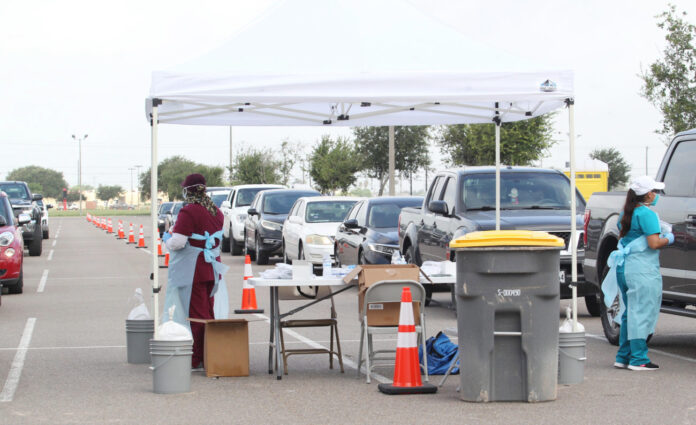Of the COVID-19 cases throughout most of Public Health Region 11, the majority of them continue to be among the younger population.
Collected data shows that of the positive cases throughout the region, 18.61% are of young adults, aged 20 to 29 years old, according to Dr. Emilie Prot, regional medical director with the Department of State Health Services.
Prot said the data is of patients in Region 11 — which encompasses 19 counties in South Texas, from north of Corpus Christi to Laredo and down to Brownsville — but excludes jurisdictions that have their own local health department like Cameron, Hidalgo and Nueces counties and the city of Laredo.
While the number of positive cases of the disease continues to skew on the younger end of the spectrum, the breakdown between males and females is more evenly distributed.
“We’re seeing it’s a pretty equal distribution but there’s a slightly higher number of females that are presenting with confirmed cases, 56.6%, and males, 43.4%,” Prot said Friday during a weekly news conference call. “What I’m very happy about is that both genders are going to get tested, and that’s what we need.”
Overall, though, the number of cases continues to rise, Prot said.
“We’re still seeing an upward trend for all of our areas — the Coastal Bend, the Valley, Laredo area in our Public Health Region 11 — so we’re still seeing an upward trend of our number of cases,” she said. “Of course, we’ve also seen that being constant with our numbers of death recently so I have not seen that decrease as of yet.”
When it comes to symptoms, Prot said the most prevalent are headache and fever, which are found among 30% of the cases. Loss of taste and smell is seen among 26%, while chills, diarrhea and fatigue are found among 17-18%.
She added that dry cough is another common symptom.
However, a significant number of people who tested positive for COVID-19 — 28.2% — report experiencing no symptoms at all.
A lot of the data and statistics rely on patients’ own recall, which isn’t always reliable, Prot said.
She also noted that some of these symptoms can easily be disregarded early on as something benign.
“So it’s important to really take a good look at what your normal is and what you’re feeling and what’s different,” Prot said.
Just as important is for people to note their exposure — whether they were at a gathering where people were close together or at another person’s house where they were within 6 feet of others without a mask.
“All of these things can help us determine — was there an exposure that proceeded your onset of symptoms and, if so, what were they and what other people were exposed?” Prot said.




